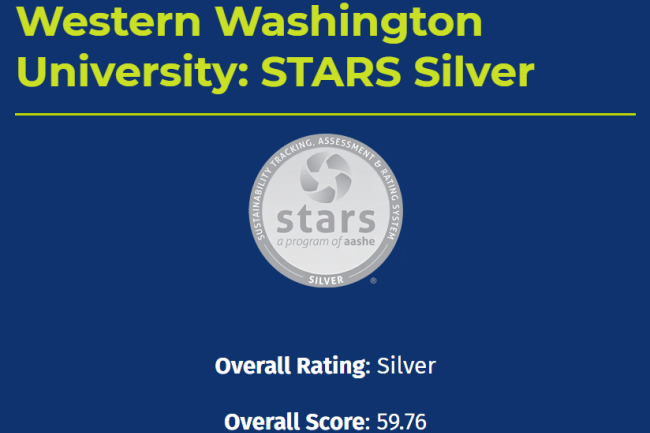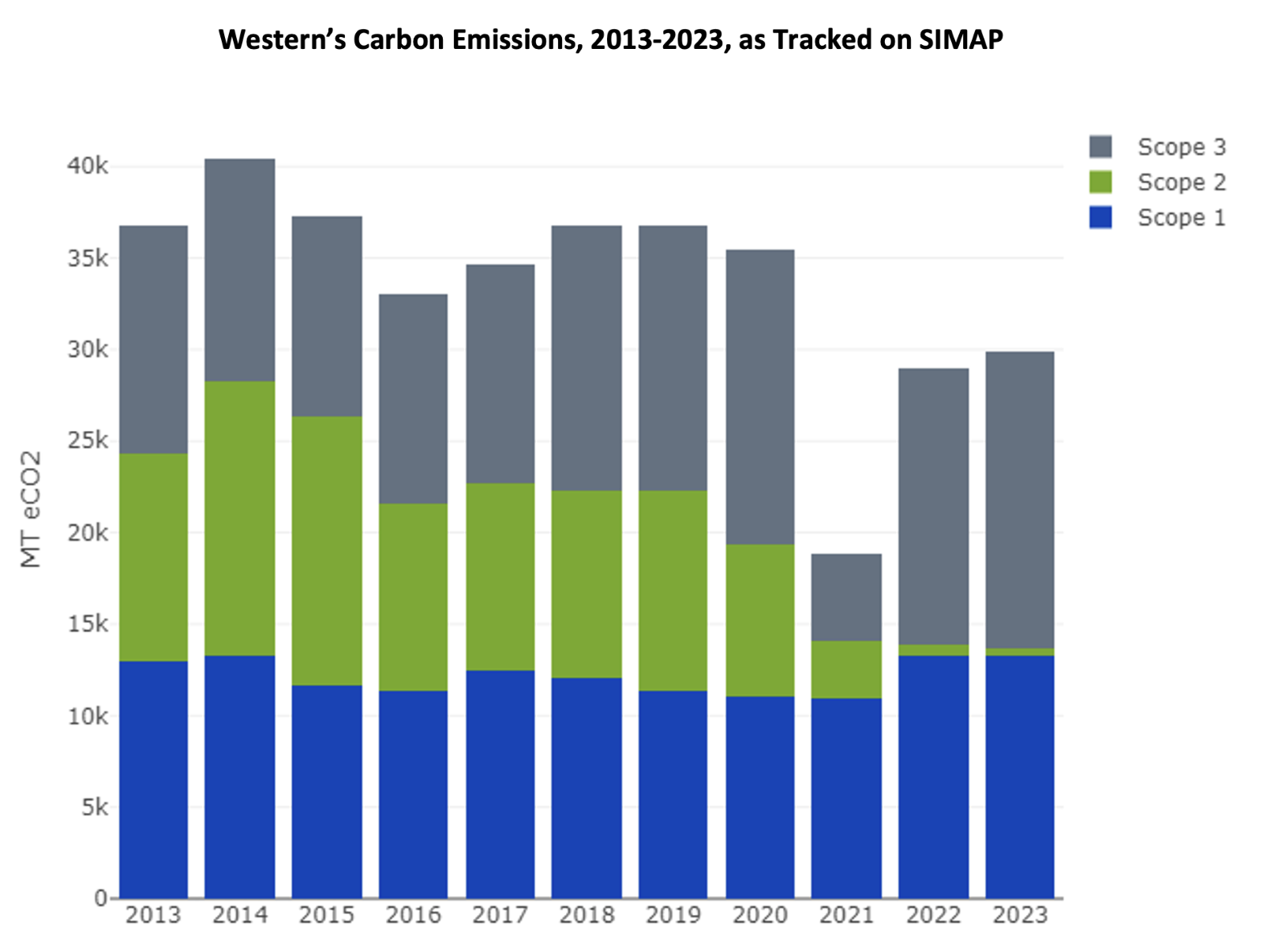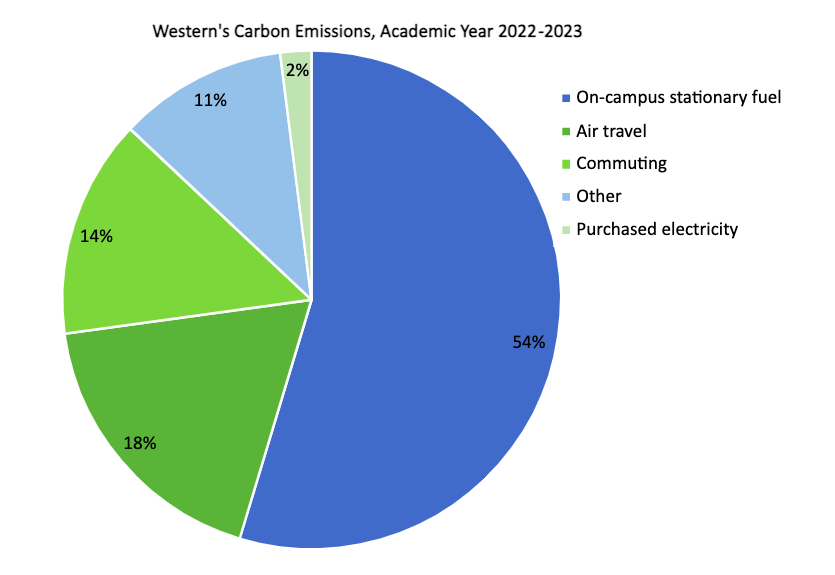Emissons Dashboard
Highlights
Western received a silver rating on its sustainability progress through the Sustainability Tracking Assessment and Rating System (STARS), a program that assesses sustainability outcomes at higher education institutions. We’ll be completing STARS evaluation again in academic year 2025 and we’ll be aiming for gold!

Emissions Graphs

Western’s carbon emissions have fallen from just over 40,000 metric tons of carbon dioxide equivalent in 2014 to around 30,000 metric tons in 2023, as tracked on Western’s SIMAP platform. SIMAP methodologies and Western’s tracking methodologies have changed over the last ten years, but this graph shows a general picture of how Western’s emissions compare over time.
Scope 1 emissions are direct emissions that are released from sources that are owned by Western, for example, emissions associated with Western-owned furnaces or vehicles. Scope 2 emissions are emissions associated with Western’s purchase of electricity, heat, or cooling. Scope 3 emissions are released from assets that are not owned or controlled by Western, but that Western contributes to through other activities, like purchasing, commuting, travel, or waste.
In 2023, Western’s main source of carbon emissions came from on-campus fuel use, which is mainly from the fuel used to heat buildings using Western’s steam plant (54%). The next largest source of carbon emissions comes from Western-related air travel (18%) and commuting (14%).

Did you know?
95%
95% of the energy that Western purchases is renewable.
2035
Western aims to achieve carbon neutrality by 2035.